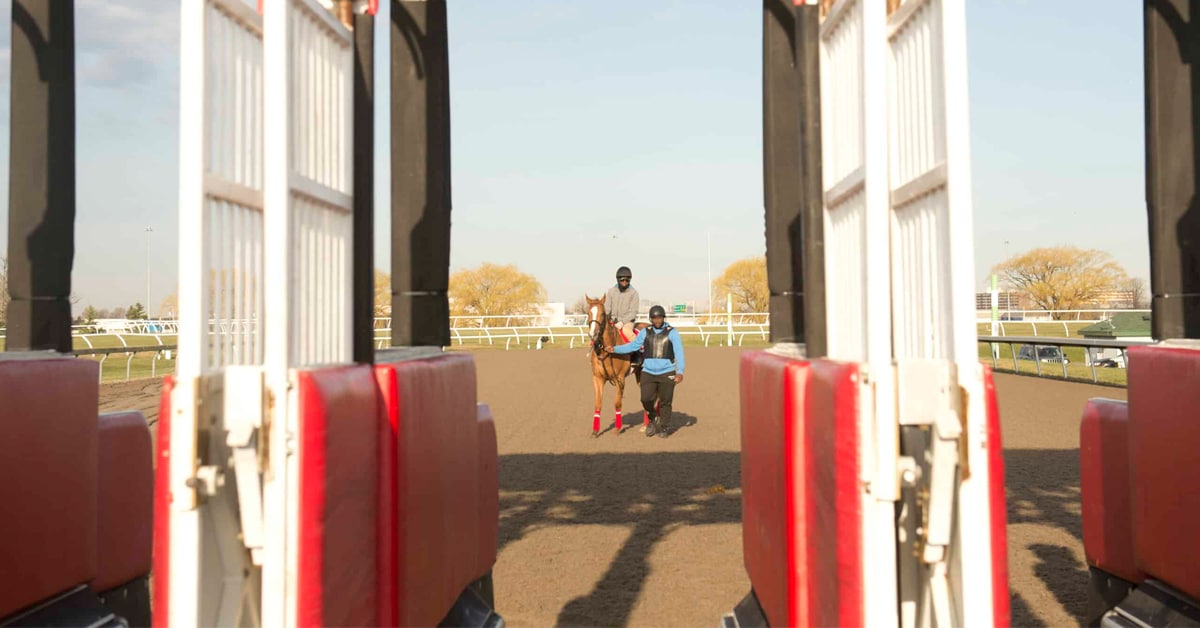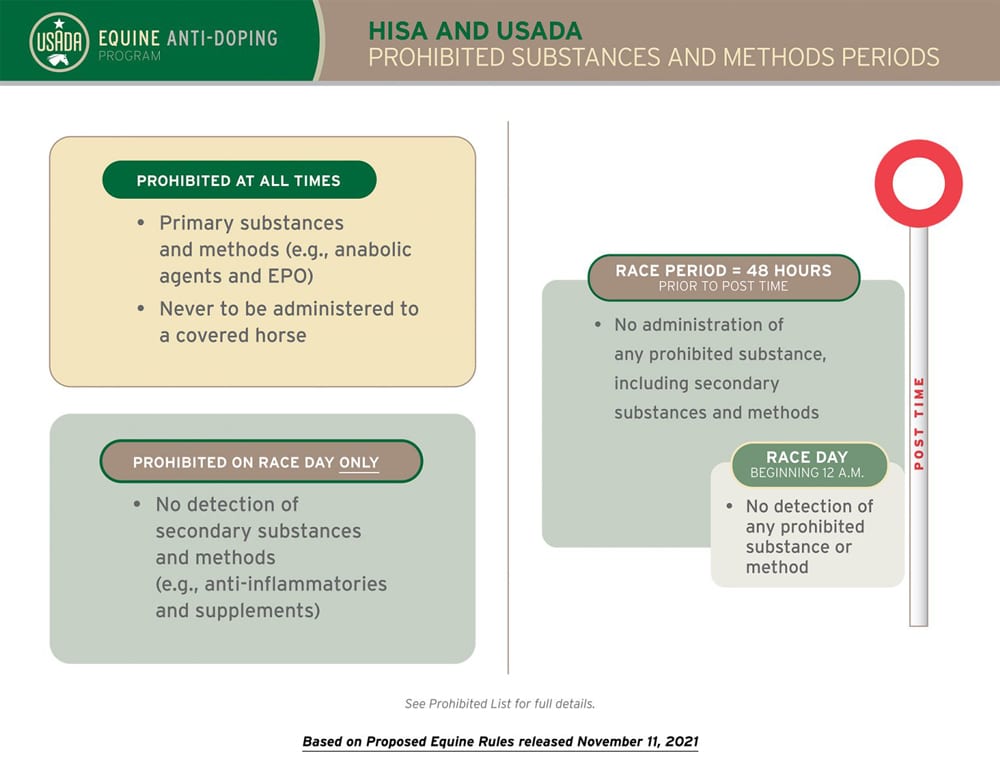The Horseracing Integrity and Safety Authority’s (the “Authority”) Standing Advisory Committees, comprised of experts from inside and outside the thoroughbred racing industry, and the independent U.S. Anti-Doping Agency (USADA) published initial drafts of proposed rules for public comment.
As prescribed by HISA, USADA has led the drafting process of the Anti-Doping and Medication Control Program; three of the six documents pertaining to the program, including the proposed Equine Protocol, Prohibited List and Definitions have been posted to date and the remaining documents will be published over the next two weeks. In addition, and separate from USADA’s work, the Racetrack Safety Program, has also been posted for public review.
These protocols are still subject to change before they are submitted to the Federal Trade Commission on Dec. 6 for further feedback and final approval. They would not take effect before July 1 and could be delayed by litigation brought by the Horsemen’s Benevolent and Protective Association (HBPA), which has challenged the Horseracing Integrity and Safety Act on constitutional grounds and out of cost concerns.
From the Associated Press on Nov. 11:
The biggest changes involve applying the rules uniformly across every racing state and altering the way violations are dealt with.
“There would no longer be a myriad of different scenarios playing out that calls into question the whole system and its effectiveness,” USADA CEO Travis Tygart said in a video interview.
Under the rules, the anti-bleeding medication Lasix would be prohibited on race day in all 2-year-old and stakes races, as well as other races. Last week, all 14 races at the Breeders’ Cup world championships were run without Lasix for the first time.
Primary substances, including anabolic steroids and erythropoietin (EPO) that can increase red blood cells and boost aerobic capacity, would be prohibited at all times.
Such secondary substances as anti-inflammatories and supplements would be banned on race day. Up to 48 hours before a race, horses could be given only water, hay and oats. Beginning at midnight on race day, there could be no detection of any prohibited substance.
Under the rules, a positive test, use or possession of a primary substance would be punishable by a suspension of up to two years or up to four years if there were aggravating circumstances or a second violation within 10 years. A lifetime ban could be handed down for a third or more violation within 10 years.
A positive test, use or possession of a secondary substance could result in punishment of a suspension of up to 30 days and a fine. That could be extended up to two years if there were aggravating circumstances or a fourth or more violation of this type within five years.
To read and offer feedback on the proposed measures, view the document here.
For more information, visit the USADA site here.
More from Canadian Thoroughbred:








